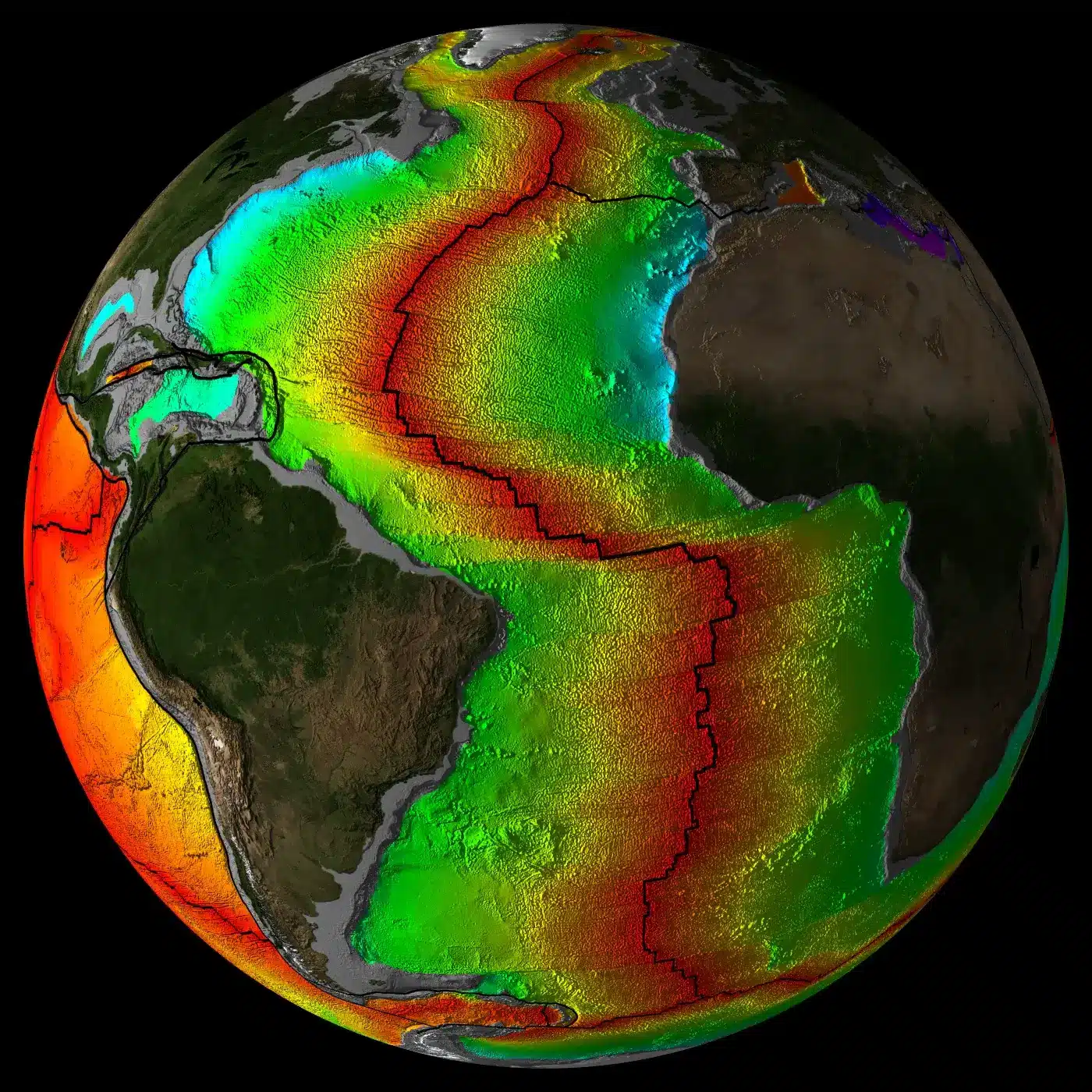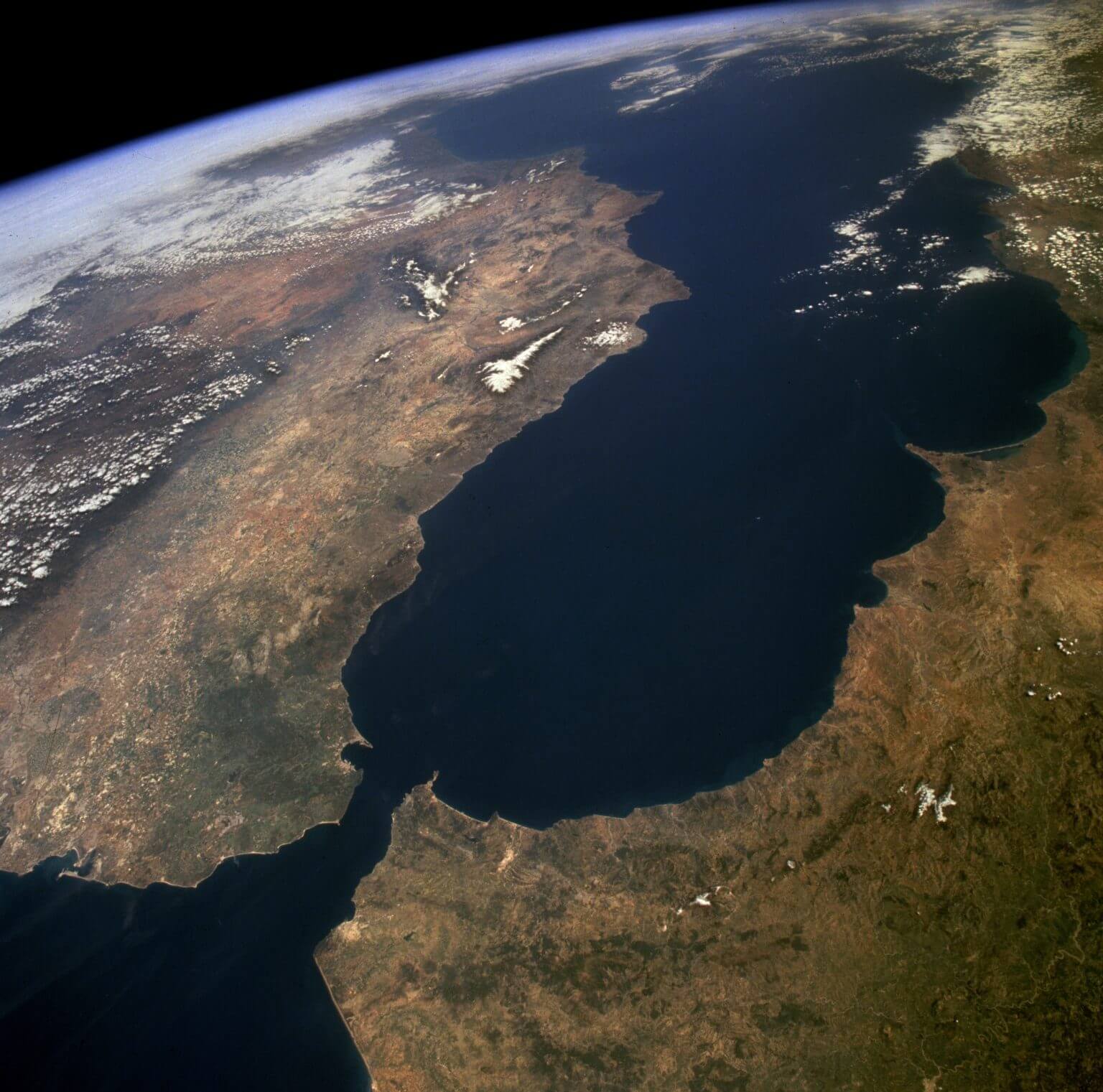Research shows for the first time how direct invasion of mitigation zones can occur. The 3D computational model, driven by gravity, predicts that the subduction zone currently under the Strait of Gibraltar will spread further into the Atlantic Ocean and contribute to the creation of an Atlantic subduction system - a ring of fire similar to that existing in the Pacific Ocean

A recent study using computational simulations predicts that the subduction zone currently under the Strait of Gibraltar will expand further into the Atlantic Ocean, and will play a key role in the development of an Atlantic subduction system - in effect an Atlantic Ring of Fire. In geological time frames, this event is expected to occur "soon", roughly in the next 20 million years.
Oceans seem eternal relative to our lifespan, but they are not here for long: they are born, they grow, and one day they close. This process, which lasts several hundred million years, is called the 'Wilson cycle'. The Atlantic Ocean, for example, was born when Pangea broke up, about 180 million years ago, and one day it is expected to close. The Mediterranean Sea is what remains of a large ocean - the Tethys - that once existed between Africa and Eurasia.
Understanding mitigation zones
For an ocean like the Atlantic to stop growing and start closing, new subduction zones need to be created - places where one tectonic plate sinks under another tectonic plate. But it's hard to create mitigation zones, because it requires slabs to break and bend, and slabs are very strong things. A way out of this "paradox" is to think that reduction zones can migrate from a dying ocean where they already exist - the Mediterranean Sea - to pristine oceans - such as the Atlantic Ocean. This process has been called reduction invasion.
This study shows for the first time how such direct invasion of subduction zones can occur. The 20D computational model, driven by gravity, predicts that the subduction zone currently under the Strait of Gibraltar will spread further within the Atlantic Ocean and contribute to the creation of an Atlantic subduction system - the Atlantic Ring of Fire, in analogy to the structure that already exists in the Pacific Ocean. It will happen "soon" in geological terms - but not before about XNUMX million years.

"Identifying the beginning of the closing process is inherently a three-dimensional process that requires advanced modeling tools and supercomputers that were not available a few years ago. Now we can simulate the formation of the Gibraltar arc in great detail and also how it might develop in the distant future", explains João Duarte, first author, researcher at the Dom Luis Institute, Faculty of Sciences of the University of Lisbon (Ciências ULisboa) (Portugal).
Active mitigation in the Gibraltar area
This study sheds new light on the Gibraltar subduction zone, as few authors believed it was still active, as it has slowed significantly over the past million years. According to these findings, its slow phase will continue for another 20 million years, after which it will invade the Atlantic Ocean and accelerate. This will be the beginning of the crustal cycle on the eastern side of the Atlantic Ocean, and it may be the beginning of the closing of the Atlantic Ocean.
"There are two other reduction zones on the other side of the Atlantic Ocean - the Lesser Antilles, in the Caribbean, and the Scotia Arc, near Antarctica. However, these subduction zones invaded the Atlantic a few million years ago. The research in Gibraltar is an invaluable opportunity because it allows observing the process in its early stages when it is just starting", adds João Duarte.
Overall, this study shows that subduction intrusion is likely a common mechanism of initiation of subduction in Atlantic-type oceans, and therefore plays a fundamental role in the geological evolution of our planet.
The finding that the Gibraltar subduction is still active today also has important implications for the seismic activity in the region. Subduction zones are known for producing the most powerful earthquakes on Earth. Events such as the great earthquake in Lisbon in 1755 are a threat and require preparedness.
Reference: "Gibraltar mitigation zone encroaches on the Atlantic Ocean" by Joao S. Duarte, Nicholas Real, Philippa M. Rosas, Anton Popov, Christian Schuller, and Boris J.P. Kaus, 13 Feb. 2024, geology.
DOI: 10.1130/G51654.1
More of the topic in Hayadan:
- The Middle East sits on seams between five tectonic plates * Thousands killed in earthquakes in Turkey and Syria
- Europe will connect with North America in 220 million years
- Strange lumps in the depths of the Earth's mantle are remnants of the planet from the collision that also created the moon
- The Earth tilted on its side to compensate for a volcanic eruption
- Unlike most Western countries, Israel does not have an active plan to deal with disasters caused by climate change

5 תגובות
And you didn't explain what a reduction zone is... and I really don't care what will happen in theory in 20 million years... or in 220 million years. The great-great-great-great-great-great-grandchildren don't care either
Ya Allah... I can't wait to see it happen...
By the way, the ring of fire will not lower the sea level.
Certainly in the universe, on earth his influence is much greater than many forces of nature.
Ha ha ha. So will global warming raise sea levels or will the ring of fire lower them? Man is barely an ant in the universe - start to internalize.